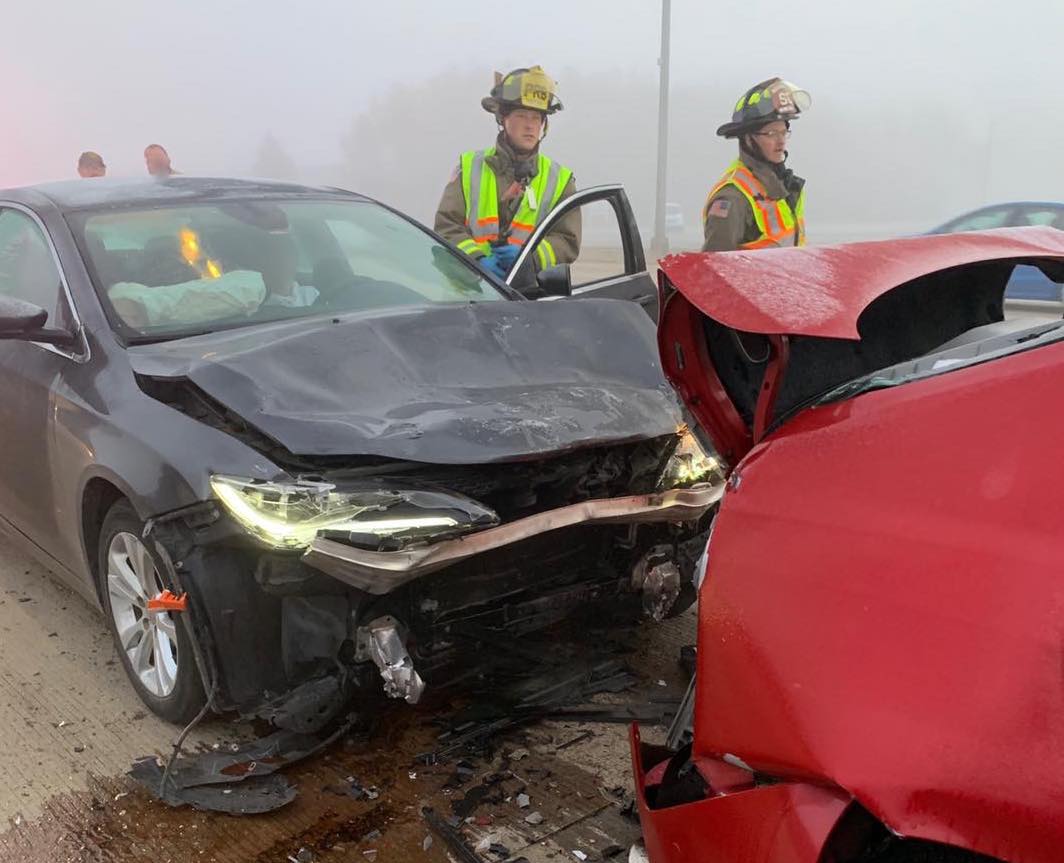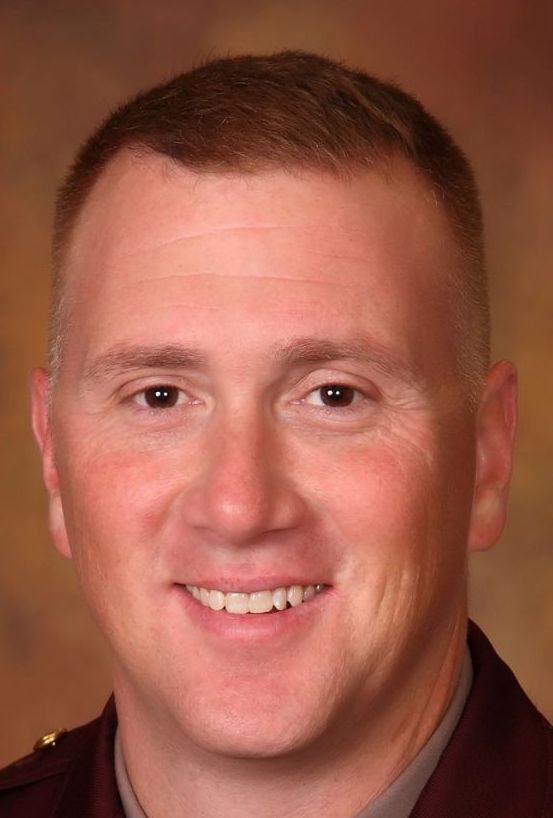Despite new laws and public-information campaigns, distracted driving and cell phone use behind the wheel continue to make roadways in South Dakota and across the country more dangerous.
New survey data from the American Automobile Association show a significant reduction in some unsafe behaviors in recent years — including impaired driving, red-light running and driving while fatigued — while rates of speeding and distracted driving remain “stubbornly high.”
Though national data show a slight decline in speeding and use of hand-held phones behind the wheel over the past decade, 45% of U.S. drivers reported to AAA they drove 15 or more mph over the speed limit in 2020, while 37% of drivers used a hand-held cell phone and 34% read a text message or email while driving last year.
According to another recent national survey by Volkswagen, half of South Dakotans reported that they used social media on their phones while driving in the past year, and nearly one in five admitted to taking a “selfie” photo while behind the wheel.
Concerns over unsafe behaviors behind the wheel take on greater urgency during the holidays, when more motorists are on the road, starting with Thanksgiving this month and through Christmas and New Year’s.
In South Dakota in fiscal year 2020, distracted driving, which includes the use of cell phones, was listed as a contributing factor in 840 of the total 17,599 motor-vehicle accidents, or 4.8% of all crashes.
Distracted driving was listed as a contributing cause of accidents at a higher rate than several other factors, including speeding, disregarding a traffic signal, improper passing, turning or backing, over-correcting, and swerving to avoid an object, according to state crash data. Of all stated or known contributing factors, failure to yield has the highest rate of accident involvement, followed by following too closely, driving too fast for conditions and alcohol use.

AAA predicts that Thanksgiving travel will rebound nearly to pre-pandemic levels this year, much of that on the nation’s highways. AAA forecasts that 53.4 million people will travel during the 2021 holiday, up 13% over 2020 and almost back to 2019 totals. AAA said the safest times to travel over the holiday period is after 9 p.m. on Wednesday, Nov. 24, and before 11 a.m. all other days through Sunday, Nov. 28.
Col. Rick Miller, superintendent of the South Dakota Highway Patrol, said some drivers continue to use their cell phones or allow themselves to become distracted behind the wheel even though they are well aware how unsafe — and illegal — the behaviors are.
“I wish I had the magical answer of why people are still doing this, but I don’t,” he said. “It takes your reaction time and makes it almost nothing. If something happens in front of you, you have very little time to react.”
When a driver is distracted for just three seconds at 65 mph, their vehicle will travel 285 feet; at 80 mph, it jumps to 351 feet, more than the length of a football playing field. A 5-second distraction at 80 mph leads to 585 feet traveled, almost the length of two football fields.
Texting while driving in South Dakota has been illegal for a decade, but was not a reason an officer could pull a driver over until July 2020. Texting became a primary offense at the same time the state made it a misdemeanor to use a cell phone in a vehicle for any reason other than in emergencies or to make a phone call. Several South Dakota cities banned texting while driving over the past decade as well.
Yet despite the laws and ordinances, Miller said distracted driving and speeding remain significant hazards on South Dakota roadways. Miller noted that troopers have clocked numerous vehicles traveling over 100 mph on South Dakota roads this year and continue to see erratic driving due to distraction.
With heavy holiday traffic expected over the upcoming holidays, drivers must be especially diligent in following highway safety rules, Miller said.
“We start taking about holiday travel and more cars on the roadway, and I don’t want to sound doomsday, but you put deer in there and a little bit of snow and ice, and it’s a dangerous situation,” Miller said. “People should remember that driving is a full-time deal; you can’t have one eye open or your knee on the wheel. It’s a dangerous machine if you’re not operating it correctly.”

“I wish I had the magical answer of why people are still doing this, but I don’t. It takes your reaction time and makes it almost nothing. If something happens in front of you, you have very little time to react.” -- Col. Rick Miller, superintendent of South Dakota Highway Patrol
South Dakota saw a high-profile distracted driving death in September 2020 when Attorney General Jason Ravnsborg struck and killed pedestrian Joe Boever near Highmore. Ravnsborg later pleaded no contest to two misdemeanors of illegal lane change and using a cell phone while driving. He was fined but served no jail time; Ravnsborg is now the subject of an impeachment investigation by the South Dakota House of Representatives.
Miller and other law enforcement experts acknowledge that enforcing laws against texting or other distracted driving is difficult because drivers may hide their behaviors and it is hard for officers to prove someone was breaking the law.
In 2019, South Dakota highway patrol troopers issued 51 citations and 56 warnings for texting while driving, and in 2020, they wrote only 26 tickets and issued 17 warnings, state data show. The fine is $178.50.
“At times it is difficult to enforce, but when we see it, we enforce it,” Miller said. “If you’re swerving all over the road, we’re going to stop the vehicle and talk about that with the driver. It could be an electronic device like a cell phone or a kid in the car, but you’re going to get stopped because you’re putting everyone, including yourself, at risk.”
Yet state statistics related to cell-phone use in car accidents likely undercount the actual number of times a driver was distracted by a phone or something else.
Unlike drinking alcohol or speeding, determining whether a driver was using a cell phone at the time of an accident can be difficult, especially if a driver doesn’t want to add to his or her liability by acknowledging he or she was using the phone at the time of the crash.
“Unless a person involved in a crash admits to using their cell phone, it is sometimes difficult to know that,” said Tony Mangan, spokesman for the South Dakota Department of Public Safety.
Distracted driving was a contributing factor in 78 fatal accidents in South Dakota over the past decade, with cell-phone use directly connected to 13 of those deaths.
In fiscal 2020, seven of the 132 fatal crashes in South Dakota, about 4.8% of the total, were tied to distracted driving. In fiscal 2019, distracted driving was a factor in only three fatal crashes, about 3.4% of the total that year.
Alcohol use, the easiest factor to confirm, had the highest rate of contribution to fatal accidents in 2020, followed by failure to stay in the proper lane and speeding.
The city of Sioux Falls has an ordinance banning the composition, reading or sending of text messages while driving or in traffic, according to Sam Clemens, public information officer for the Sioux Falls Police Department.
Clemens said some people have tried to continue using their phones but in a way that makes it harder for officers to see any unlawful behavior.
“The law made some people hide their phones, putting it on their lap rather than holding it by the steering wheel,” Clemens said.
Still, the city has issued 457 tickets to drivers violating the local texting ban and another 24 tickets for violation of the state cell-phone law since 2013, according to police department data.
Clemens said that despite the difficulty in enforcement of the local ordinance, almost everyone who drives a vehicle understands that using a phone behind the wheel is distracting and dangerous.
“It’s pretty common to see cars swerving around,” he said. “They have to train themselves and make a concerted effort to not be on their phone when they’re on the roadway. If it’s urgent, pull over and park before you get on your phone.”
Distraction distances: How fast, how far when driving
Here is a look at how far a vehicle will travel during the time it takes to write or read a text message for three or five seconds at various speeds. In South Dakota, most highways have a 65 mph limit and interstates can have a limit of 80 mph. For reference, a football playing field is 300 feet long.
3-SECOND DISTRACTION
45 mph — 198 feet traveled
65 mph — 285 feet traveled
80 mph — 351 feet traveled
5-SECOND DISTRACTION
45 mph — 330 feet traveled
65 mph — 475 feet traveled
80 mph — 585 feet traveled
Some phone uses, such as making a call, speaking on the phone or using it in an emergency, remain legal, Clements said, adding to the difficulty officers face in making a judgment about potential violations.
Officers who approach a motorist cannot just take the person’s phone and examine it without probable cause or a warrant, Clemens said.
“It’s somebody’s personal property,” he said. “You have to see somebody on that phone, and there has to be something other than making a call, so it’s a hard law to enforce.”
Clemens said one assumption by local and state authorities is that if an activity such as using a cell phone while driving is made illegal by state law or local ordinance, then there will be a certain number of people who will obey the law whether or not it is difficult to enforce.
“The idea was that if you make it illegal, you’ll have some voluntary compliance from some people, and some is better than none,” he said. A few years ago, Sioux Falls police initiated an enforcement effort in which officers watched drivers to see if they were illegally using their cell phones behind the wheel, then radioed ahead to other patrol officers who pulled over and ticketed offenders.
Even with that targeted enforcement, officers wrote a limited number of tickets, Clemens said.
“It was time intensive and manpower intensive to do that, and I don’t know if it made much of a difference,” Clemens said.
Derek Mann is a crash-reconstruction expert for the Rapid City Police Department who also spent several years as a state highway patrol trooper and accident expert.
Mann said distracted driving remains common, and can easily be seen on the roads and especially at the scene of accidents caused by distracted driving.
“I see people on their phones all the time because it’s my work environment, so it’s what I look for,” Mann said. “I see distracted driving all the time here in Rapid City, especially on rear-end collisions.”
Mann said he understands the temptation to use a cell phone while driving, especially in some areas of South Dakota where travel times are long and highways are flat and straight.
“It’s tempting to look at your phone when you’re out on the interstate by Presho and there’s nothing to look at but fields,” he said.
Mann said that teens and young adults may find it harder than most to spend time behind the wheel and not use their cell phones, which are actually small computers that can serve many functions beyond talking.
According to an AAA survey in South Dakota in 2019, drivers aged 19 to 24 are six times as likely as all drivers to read a text message or email and twice as likely as all drivers to compose or send a test message or email behind the wheel.
“Facebook, Snapchat, Instagram, all the different social media, let alone the text-messaging, they’re so interconnected with their cell phones that it becomes part of them,” he said.
Mann, who has two adult children, said he is amazed at how quickly young people can type a text message. But even the fastest text-message typist cannot do it safely behind the wheel, he said.
“They can do it while they’re driving and it might be three seconds, but in that three seconds at 75 mph, you’re running 90 feet a second, so things come up on you fast,” he said.
Despite any state laws or local ordinances against texting or other cell-phone use while driving, Mann said, drivers need to realize the great risk of distractions and behave safely while driving.
“It’s personal responsibility; that’s what it comes down to,” he said. “You’re in a 3,000-plus-pound vehicle, so it’s going to take a little bit of time and space to stop it, so you need to be aware of that and respect it.”
Mann said drivers should make wise decisions about cell-phone use before they cause an accident that changes their life or the lives of others forever.
“It just takes a second and the next thing you know you’re in a bad crash or something even worse,” he said. “The worst part of this job, and I’ve done it for years, there’s nothing worse for an officer to knock on the door and tell a loved one that someone has died in a crash. In their lives and in our lives, I will always be that guy who told them their son or daughter or husband or wife died in a crash.”



